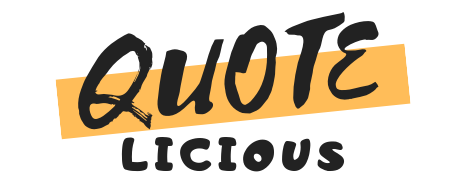7 Ways to Protect Your Digital Assets from Emerging Threats
Individuals and companies in this modern world have a lot of digital assets. Unfortunately, they are often overlooked and quickly taken for granted because they are intangible. That’s why it’s essential to take stock of what these digital assets are and assess them for their value. This way, people who own them won’t be susceptible to threats.
Digital assets can be something clients purchase but do not fully own, like graphic templates or even songs from an online vendor. Consumers can download what they bought but still don’t fully own the copyright to the digital products.
For example, even if someone tells someone, “do my assignment for me,” and pays for full ownership of that content, it becomes the payee’s digital asset. Thus, it is crucial to take time to understand and document online valuables to protect and secure them. Learn more about this issue and find out how to identify and protect these digital assets from potential threats:
What are Digital Assets?
They are things people or companies own that are intangible and present online. Some may be on a person’s computer or a company’s server or stored in a cloud. Some of the most common digital assets are:
- Photos
- Illustrations
- Videos
- Domain name
- Website content
- Blog articles
- Graphics/ logos
- Slide presentations
- Audio
- Social media (includes all accounts and posts)
- Apps (those developed explicitly for business)
- Proprietary processes (ex., Invoice tracking or content management system that can be monetized)
- Customer databases
- Intellectual property under copyright
Why Must They Be Protected
Digital assets add value to individuals and companies. For business, investors look at them to evaluate a company’s financial health. With proper documentation, some companies can sometimes claim tax-deductible expenses against valuables stored online. They must be regarded as equally important as physical assets, so it is imperative to protect them.
Tips to Protect These Valuable Items
Start by taking stock of all valuables online to see what needs protection. Making an inventory list gives a complete picture and ensures nothing is overlooked. Again, they include everything from client lists and customer information to patents and trademarks. These are valuable hacks to help protect these important things from many online threats:
1. Apply Valuation and Establish Ownership
The primary step to protect digital assets is to apply valuation and establish ownership. It would help to work with legal counsel to document ownership fully. A business appraiser could also help in determining the valuation. Do note that values could change over time as times evolve and the business grows.
Establishing ownership through registration is important in protecting something valuable but intangible. Everything from website content to original imagery can be copyrighted. For example, an individual or company can register trademarks, copyrights, and patents in the United States through a public office.
2. Limit Access to Authorized Users
Limiting access to authorized employees is an essential step. Strict restrictions that limit access to employees who use them for their work decrease threats of having these valuables stolen. The fewer people handling them, the better. More importantly, authorized users must be aware of following the best practices such as:
- Using a strong password for protection
- Having several authentication steps in place
- Being cautious about what devices are allowed for work
- Setting up appropriate firewalls and virus software to prevent cyber threats
3. Utilize Protective Agreements
Establish agreements with employees and third parties with access to digital assets. It’s essential to have employees, freelancers, contractors, consultants, and clients sign protective agreements like confidentiality clauses in work contracts or non-disclosure agreements. Having this paperwork with potential sanctions outlined will make people extra careful.

4. Prioritize Strong Data Security
Those serious about protecting digital assets need strong security against hackers known to exploit loopholes and weaknesses. Thus, investing in licensed operating systems and using updated cloud-based applications is vital to prevent hackers from gaining access.
Training employees about what scammers do, such as phishing, is also vital. Proper training prevents them from succumbing to potential threats and keeps them vigilant in securing data. It also teaches them advanced security features that add extra layers of protection, like two-factor authentication.
5. Use a Secure Wi-Fi System
Those wishing to keep their digital assets safe in the office or home must follow the best security practices. For starters, routers must be stored in a secure physical location. It would also help to invest in high-tech routers with an option for encrypting data because this makes it harder for hackers to gain access. And finally, it is crucial to do the following:
- Regularly change Wi-Fi network name
- Constantly update Wi-Fi password
- Enable a strong firewall
- Constantly update firmware and software
6. Have a Solid Back Up
Bad things happen even to the most vigilant and careful people. That’s why it is crucial to have a redundancy plan for digital assets in case something goes haywire. A reliable backup plan provides peace of mind and assures operations can continue even if something untoward happens.
7. Establish Document Protocols
After owners account for all their digital assets, they must record the information to help with management. For those with employees, it’s critical to establish document protocols. For example, they must set timelines for updating, creating backups, and conducting software reviews. Having a guideline for digital asset management will help the team be more mindful of asset use and protection. And note that these protocols must also be constantly updated and modified as the business and environment evolve.
Wrap Up
It is important to protect intangible valuables online since they can be readily stolen. To prevent losses, owners must stay proactive in doing their part to establish and consistently maintain security measures. Internet-based risks abound with hackers becoming more daring, so owners cannot be complacent. Sadly, even the most vigilant people have become victims of scammers and hacks.
And for further protection and peace of mind, it would help to have an insurance policy in place for those with significant digital assets. Insurance can help owners cover costs in case there are data breaches. Losses include potential profits and may result in further extortion and client lawsuits. Having a comprehensive understanding of these digital assets and having protective measures in place can help with future-proofing the said assets.







